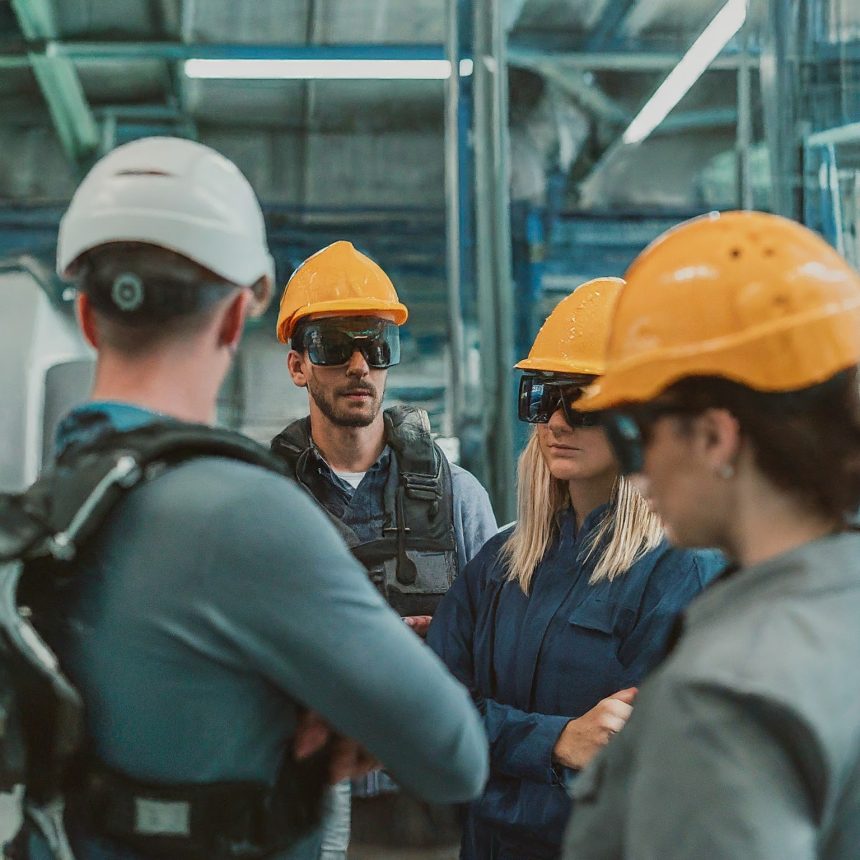The industrial wearables market is expanding quickly due to improvements in connection, downsizing, and wearable technologies. These cutting-edge gadgets are intended to provide workers in a variety of sectors with improved safety, productivity, and real-time information access.
What are Wearables for Industry Use?
Industrial wearables are a broad category of gadgets that employees wear on their bodies. These devices are often equipped with a variety of sensors, monitoring technologies, and data analytics. These gadgets are available in a number of formats, such as:
- Smart Glasses and Augmented Reality (AR) Headsets: Provide on-the-job instructions, offer remote expert assistance, and enhance data visualization during complex tasks.
- Smartwatches and Wristbands: Track worker health metrics, alert to potential dangers (such as high temperatures or falls), and facilitate hands-free communication.
- Exoskeletons: Mechanically assisted support systems that lessen workers’ physical strain and increase their endurance.
- Smart Helmets and PPE: Equipped with sensors to monitor ambient conditions, identify threats, and enhance worker safety.
Industrial Applications
Industrial wearables are becoming more important in a variety of industries:
- Manufacturing: Wearables improve worker safety in hazardous areas, expedite assembly lines, and provide real-time equipment diagnostics.
- Logistics and Warehousing: Increase order fulfillment precision, worker mobility optimization, and inventory level tracking across large facilities.
- Construction: Maintain worker safety on hazardous working sites, track equipment placement, and keep an eye out for environmental risks.
- Healthcare: Hands-free data access for medical practitioners, remote patient monitoring, and increased clinical effectiveness.
Principal Market Forces
- Increasing Productivity: Real-time coaching, remote expert assistance, and hands-free operations help workers perform jobs quicker and more efficiently.
- Focus on Worker Safety: Employers are empowered to create safer work environments with advanced tracking, danger identification, and emergency alerts.
- Data-Driven Insights: Wearables provide comprehensive data on employee performance, the state of equipment, and working circumstances, which helps with decision-making.
- IoT Integration: Smartphone interaction with linked devices in the Internet of Things (IoT) increases industrial wearables’ capabilities.
Market Outlook
According to projections, the industrial wearables market is expected to develop rapidly and reach billion-dollar levels in the next few years. Enhancing technology, expanding affordability, and boosting acceptance in high-risk industries will be crucial elements driving development.
Difficulties and Points to Remember
- Data Privacy and Security: Data privacy and security concerns need strong cybersecurity protocols.
- Device Cost: Business executives must balance the operational advantages of technology with its expenses.
- Worker Acceptance: To guarantee gadget adoption and reduce distractions, ergonomic design, and unambiguous rules are essential.
The Industrial Work of the Future
Industrial wearables might completely redefine the industrial workplace. These gadgets have the potential to completely transform a wide range of industries, including manufacturing, logistics, construction, and many more, by giving workers more assistance, information, and safety measures. Anticipate an even greater level of sophistication and a greater role for industrial wearables in a connected and contemporary workforce as technology advances.








